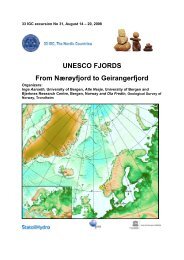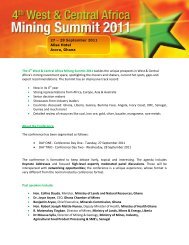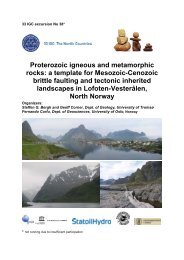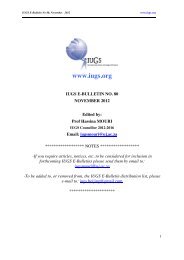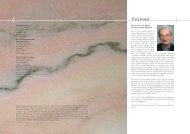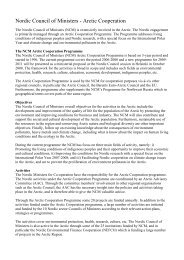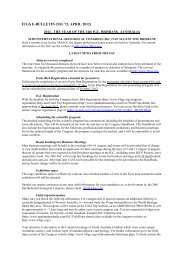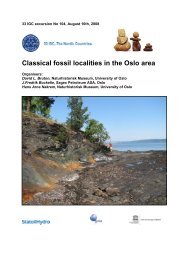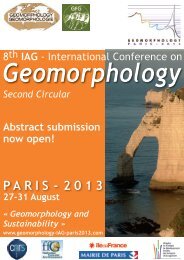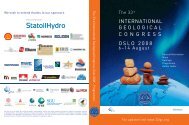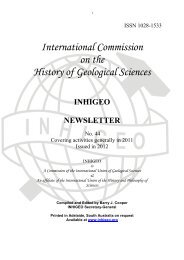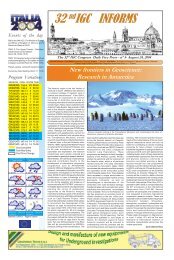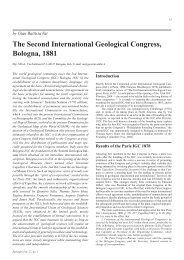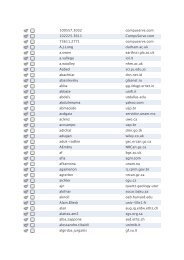You also want an ePaper? Increase the reach of your titles
YUMPU automatically turns print PDFs into web optimized ePapers that Google loves.
42<br />
7,5-7,69 - gyttja dark brown, weakly<br />
laminated.<br />
7,69-7,86 - dark brown to black laminated<br />
muddy gyttja.<br />
7,86-7,97 - brown laminated muddy gyttja.<br />
7,97-8,15 - laminated mud interrupted by a<br />
1 cm thick, organic-rich layer, in interval 8.07-8.08<br />
– shell fragments.<br />
8,15-8,46 - laminated mud with shell<br />
fragments.<br />
8,46-9,0 - mud weakly laminated.<br />
9,00-9,37 - massive mud.<br />
9,37-10,9 - dark green weakly laminated<br />
mud with more light impurities and shell<br />
fragments.<br />
10,9 -11,27 - dark green massive mud with<br />
muddy “concretions” more light colour.<br />
11,27-11,86 - dark green weakly laminated<br />
mud with more light impurities and shell fragments.<br />
11,86-12,28 - dark green massive mud with<br />
muddy “concretions” more light colour and rich<br />
shell fragments.<br />
12,28-12,75 - dark green weakly laminated<br />
mud with more light impurities and shell fragments.<br />
12,75-12,77 - brown layer of mud and<br />
organic material (organic material ~25%).<br />
12,77-13,53 - interbedding of mud and<br />
organic material (ratio of mud and organic material<br />
~55:45%).<br />
13,53-13,82 - blue laminated clay (varve<br />
clay).<br />
13,82-14,47 - sand laminated.<br />
Fig. 3.10. Bottom-sediments litothostratigraphy of Umba area, lake3 with threshold of 30 m<br />
a.s.l (Fig. 3.8).



